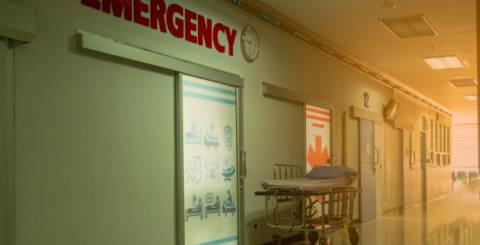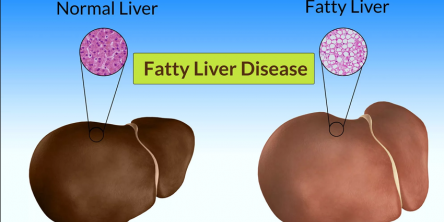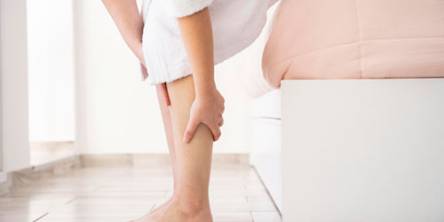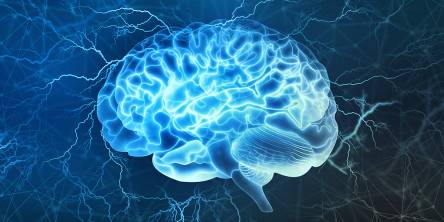Common Medical Emergencies and How to Treat Them

Medical emergencies can happen anywhere and anytime. In case of any type of a medical emergency, you shouldn’t panic at all instead if you keep calm and take the necessary precautionary measure then it can help to reduce the damage and save lives.
The following are a few of the common medical emergencies and the ways to treat them:
Heart Attack
A heart attack is one of the most common medical emergencies. There are more than 10 million cases of heart every year only in India. It is also the leading cause of death in America.
A heart attack occurs when the supply of blood to the heart reduces or stops completely. This happens when there is a blockage in an artery supplying blood to the heart muscles.
The most common symptoms of heart attack are pain and discomfort in the chest area.
Patients also experience shortness of breath, stomach discomfort, fainting, sweating, and pain in the jaws, neck, or shoulders.
Men and women both can experience different symptoms of a heart attack. Men experience cold sweats and pain in the left arm, whereas women are more likely to have shortness of breath, stomach upset, and dizziness.
How to Treat Heart Attack?
Immediate treatment within the first 90 minutes of a heart attack is very vital as it can dramatically increase the chances of survival. A dose aspirin tablet can lower the risk of clot formation until the time the patient reaches the hospital.
Make the patient sit in a comfortable position, and If breathing isn’t normal or the patient is unresponsive, hands-on CPR can be applied to double the chances of survival.
For the best treatment, immediately rush to a family medicine doctor.
Burns and Scalds
Burns and scalds are most common with people working in the household and commercial kitchens and people handling heavy machinery and chemicals.
Burns can be caused through dry heat such as fire or contact with extremely hot metals such as machines and utensils or contact with an object charged with a high tension electric current, or friction with a fast-moving object or rope.
Whereas a scald is an injury caused by moist heat, like boiling water, steam, hot oil, or tar.
The effects of a burn or a scald are the same; both are equally painful and need immediate treatment and medication.
In the event of any type of burn, you might experience reddening of the skin or blister formation or destruction of the skin, or of the deeper tissues.
The areas affected by burns and scalds and the cloth are both sterile for a limited time and you need to make sure it remains sterile until medical help arrives.
How to Treat Burns and Scald?
Immediate treatment for burns and scalds is very important and make sure till proper medical aid is available, avoid touching the affected area unnecessarily and wash your hands properly with soap. Do not apply any kind of cream or lotion without consulting a doctor.
Immobilize the affected area and try to cover it with a sterile dressing or cloth. Never try to fidget with the burnt skin or break the blisters.
Bandage firmly if there are no blisters and in case of blisters make sure you bandage it lightly.
In case of a major burn, immediately move the patient to the nearest hospital and don’t give any oral medication without consulting the doctor as the patient might need an anesthetic.
Heat Strokes
Heatstroke is a condition most common for people living in hot climate places or during summer months. it is mainly caused when the body overheats usually due to excessive exposure to heat or physical exertion in high temperatures. This most serious form of heat stroke can occur if your body temperature rises to or above 40 degrees Celcius.
How to Treat a Heat Stroke?
In the case of heat stroke, the first thing that you need to do is remove the patient from the heat. Remove excessive clothing or protective gear if any.
Cool down the patient by placing them in a tub of cool water or making them sit under a cold shower.
You can also cool them down by spraying cold water or sponge with cold water. Once done with that then, you can place ice packs or cool, wet towels on the neck, armpits, and groin and cover them with cool, damp sheets.
Make the patient drink medium, cool water to hydrate them.
Electrocutions
Electrocutions are mainly caused when a person touches an alive and naked wire, cable, or rail. Electric shocks can be relatively mild, or extremely severe depending on the voltage and type of current.
Electrocutions with direct current usually result in burns, and the burns may be severe or deep, especially with higher voltages.
How to Treat an Electrocuted Patient?
Switch off the current immediately, and if it cannot be switched off, cut off the supply by removing the plug, cutting the cable, or wrenching it free. Never attempt to cut a cable with a knife or scissors or any other metal object as it might result in further electrocutions.
If switching off the current is not possible, the best thing to do is to remove the patient from contact with the current with the greatest care. For doing this you can use dry insulating materials. With domestic apparatus, cloth gloves or a folded bed sheet or garment or newspaper gives enough protection.
If possible, move the patient immediately to emergency care centers.
Make the patient lie down on their back with the head low and turn to one side. Loosen or remove the clothing around the neck, chest, and waist. Wrap them in a blanket or rug. Give the patient a few sips of water, coffee, or any liquid except alcohol.
Fractures
Fracture, in simple terms, means a broken bone. It can either be a minor crack or a complete break. A simple fracture is when there is no wound leading to the broken bone.
Common symptoms and signs of fractures are constant pain and tenderness or discomfort on slight pressure on the fractured area.
Swelling and deformity are few other common symptoms of a fracture. This swelling frequently makes it difficult to notice any other signs of fractures.
How to Treat Fractures?
Don’t move the patient until the fractured part is completely immobilized, and try to treat the patient on the spot.
If the patient needs to be moved to a hospital, then you need to carry out a temporary fix and immobilization to enable the patient to be moved to the nearest hospital or clinic.
Immobilization of the fractured part is very vital for preventing further injury and the increase in the bleeding. It also prevents the broken bone from piercing or damaging the skin, muscles, blood vessels, or nerves.
Immobilize the fracture by tying it with a bandage or with the help of a splint. Never apply the bandage directly on the wound or the site of the fracture, use them only to restrict harmful movements. Make sure it not very tight to prevent blood circulation.
Similar Articles
We often experience small discomforts or symptoms that seem insignificant, like headaches, fatigue, or brittle nails. Many times, we brush them off, thinking they’ll go away on their own. However, these minor issues might be your body’s way of telling you that something more serious is going on.
According to the World Health Organization (WHO), half to three-quarters of adult persons globally experienced a headache in the past year. Unfortunately, tension headaches are one of the most prevalent symptoms you can have. Furthermore, some tension headaches resemble migraine headaches, making matters worse.
The review of Yakrit Plihantak Churna is going to be amazing. You will know the facts, does it works along its benefits. The liver is the main engine of the body. It is the second largest gland in the body.
A podiatrist is a doctor who focuses on treating foot and ankle ailments. If you have specific medical issues, you may need to see a podiatrist for therapy that your primary doctor cannot offer. Don't overlook pain in your lower leg, foot, ankle, or toes.
A podiatrist is a medical expert who focuses on foot and ankle care. There are various reasons you may need to see one.
Swelling is a common issue that can strike anyone. Occasional leg swelling may occur after a long day on your feet or from sitting too long. However, if your legs are regularly swollen, it could indicate a serious underlying condition. Swelling can cause leg pain, loss of sensation, redness, and itching. If left unmanaged, it can lead to stiffness and difficulty walking.
Choosing the best aesthetic medicine courses will significantly boost your career. Medical professionals looking to expand their practice and stay ahead in the field of aesthetic medicine will find these training programs invaluable
Lower back pain is like a storm gathering over the horizon all day. The dull discomfort, the throbbing feeling, and the stiffness all add up until, like a thunderclap, it explodes into full-fledged pain. It penetrates your whole body, removing choice and control. Your mobility is restricted, making daily tasks difficult, and if not addressed, it can cause permanent damage.
Even though migraine affects over one billion people around the world, it has long been neglected as one of the most devastating diseases on the planet. Migraine headaches are a neurological disorder characterized by recurrent pounding or throbbing headaches, nausea and vomiting, and sensitivity to light, sound, and strong odors









